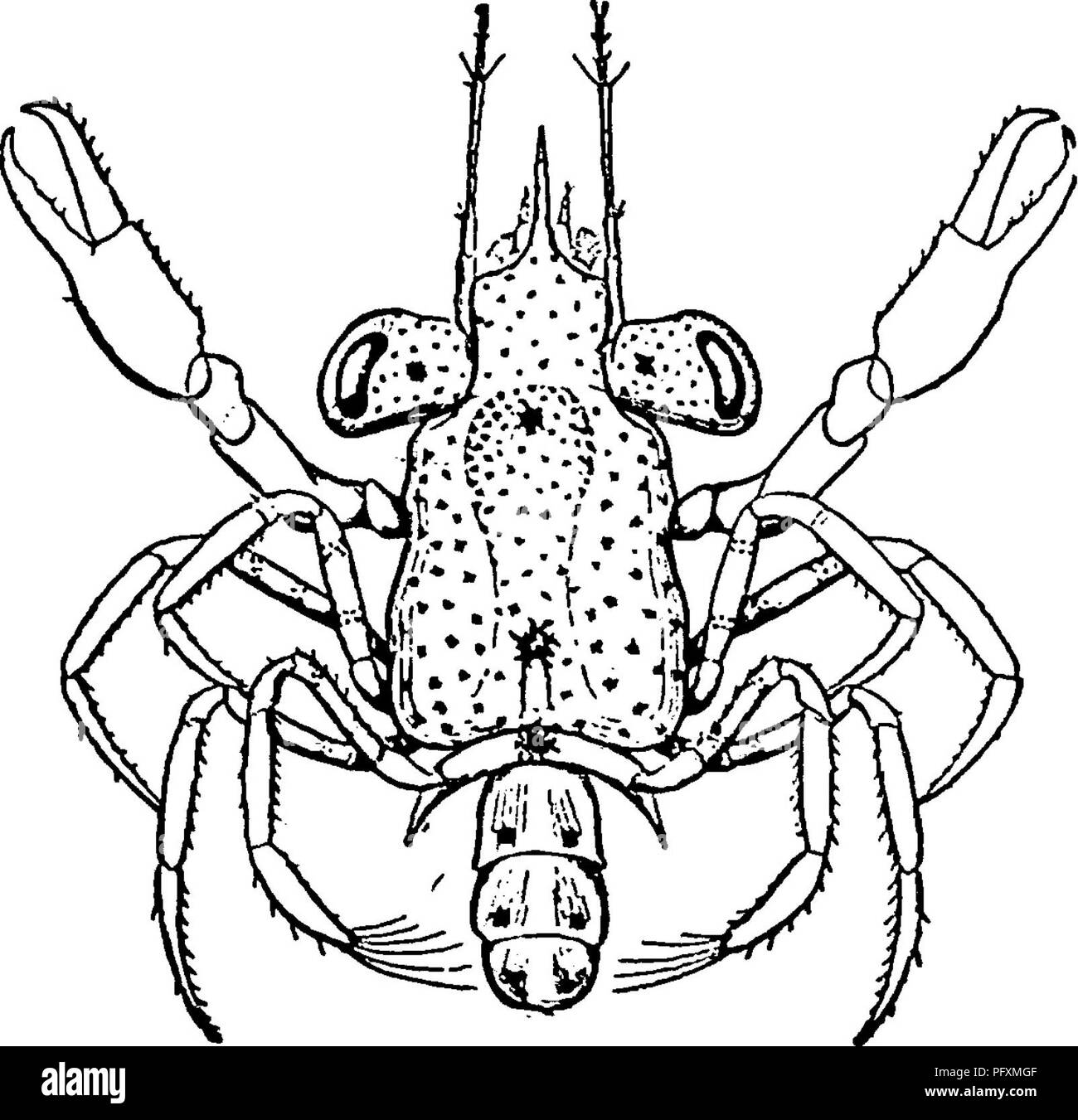. The Eurypterida of New York. Eurypterida; Paleontology. THE EURYPTERIDA OF NEW YORK 119 lack of development of the abdomen in the earlier stages and corresponds to a like antecedence in development of the cephalothorax in Limulus especially manifest in the embryological stages. From geological evidence and theoretical reasons, just the reverse is to be postulated in the phylogeny of the eurypterids, i.e. an earlier weaker development of the cephalothorax. The greater size of the carapace in such trilobites as Harpes is considered as a larval character retained to maturity, but this is no evi

Image details
Contributor:
Central Historic Books / Alamy Stock PhotoImage ID:
PFXMGFFile size:
7.1 MB (329 KB Compressed download)Releases:
Model - no | Property - noDo I need a release?Dimensions:
1604 x 1557 px | 27.2 x 26.4 cm | 10.7 x 10.4 inches | 150dpiMore information:
This image is a public domain image, which means either that copyright has expired in the image or the copyright holder has waived their copyright. Alamy charges you a fee for access to the high resolution copy of the image.
This image could have imperfections as it’s either historical or reportage.
. The Eurypterida of New York. Eurypterida; Paleontology. THE EURYPTERIDA OF NEW YORK 119 lack of development of the abdomen in the earlier stages and corresponds to a like antecedence in development of the cephalothorax in Limulus especially manifest in the embryological stages. From geological evidence and theoretical reasons, just the reverse is to be postulated in the phylogeny of the eurypterids, i.e. an earlier weaker development of the cephalothorax. The greater size of the carapace in such trilobites as Harpes is considered as a larval character retained to maturity, but this is no evidence of the primitive character of the genus. Likewise eurypterids with lai'ge carapaces, as certain species of Eurypterus, are not at all to be considered as primitive. The philosophy and phylogeny of the arthropods agree in postulating a gradual growth and consolidation of a greater number of segments into the cephalothorax. The smaller cephalothorax is therefore to be considered as the more primitive and the evidence from such euryp- terids as the Cambric Strabops and the simpler species of Eurypterus, is not contradictory to this conclusion. Altogether the remarkably small size of the cephalothorax of the eurypterids in comparison with the abdo- men is to be considered as one of their most striking primitive characters. The larger size of the larval eyes is regarded by us as a larval char- acter without phylogenetic significance. It finds its striking analog}^ in the megalops stage of the crustaceans, well shown in the common crab Callinectes [see text fig. 23]. In this stage the eyes are not only of excessive size, but also situated at the ends of very movable stalks. In the larvae of the euryp- terids the lateral eyes were not only of large size but also borne on very high and large ocular nodes (particularly well shown in Stylonurus myops), giving them a like prominence. None of these featm'es is observable in either the larvae of Limulus or of the scorpion and we have